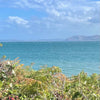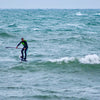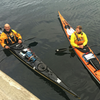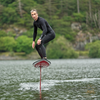Menai Strait tides - a basic explanation
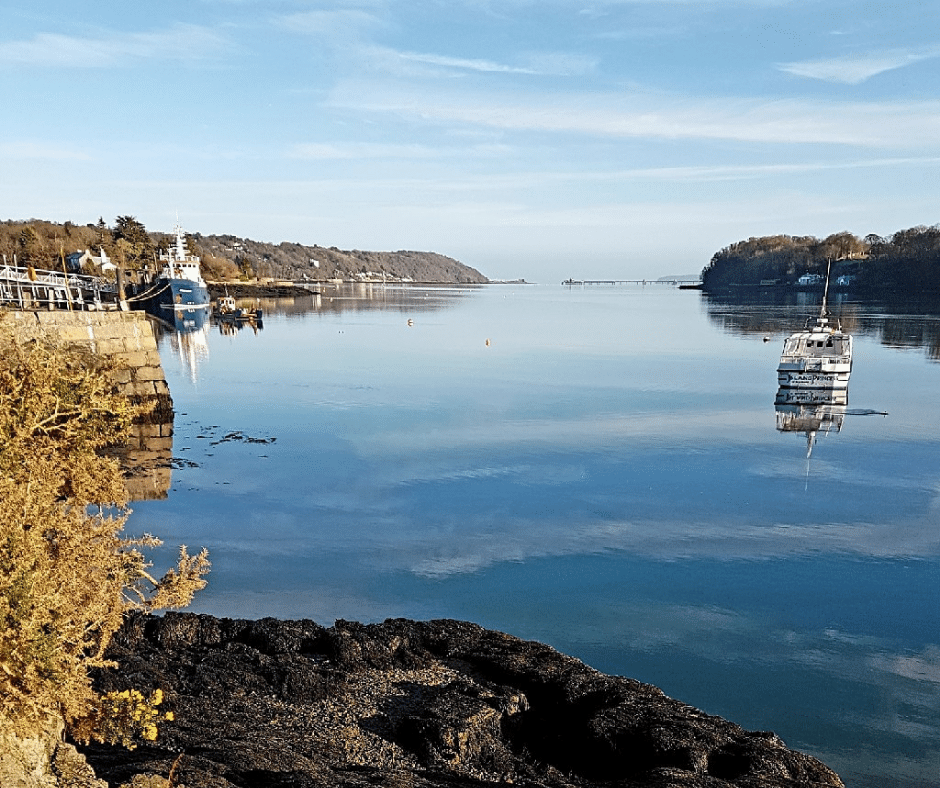
The Menai Strait is famously known for fast flowing complex water with whirlpools, waves and strong currents.
Reputation has it that Lord Nelson regarded a safe passage of the Menai Strait as a true test of a sailor’s skills. The Swellies is the stretch of water between the A55 Britannia Bridge and the A5 Menai Bridge where the flow of the water can reach speeds of 4m per second, 9mph or 8knots. Understanding how the tides flow through through the Menai Strait is not only interesting but also vital for anyone who is considering using it as a potential paddling or swimming venue.
Back to basics
The tides are created by the gravitational forces exerted on the earth by the moon and it’s position relative to the earth and the sun.
The biggest tides are known as spring tides and happen when there is a “new" and a “full” moon, approximately every two weeks. During spring tides you will notice a higher high water mark and a lower low water mark on a beach.
Alternating with each spring tide is a neap tide which is when the high and low water points are closer together and less noticeable on the beach.
As the tide comes in it is said to be flooding or on the flood. As the tide is going out it is said to be ebbing.
Slack water is the name given to the phase of the tide as it reaches the limit of its rise and fall.
At an open beach the speed of the tidal movement is generally most noticeable around mid tide height on a spring tide.
What happens in the Strait as the tide floods from the south.
Along the west coast of the UK the general direction of a flooding tide is from south to north while an ebbing tide will generally travel in reverse, from north to south. If we zoom in to Wales and consider that the flooding tide travels up the Irish Sea from south to north we can start to understand how the incoming tide affects the current in the Menai Strait.
As the flooding tide reaches the southern end of the Strait at Abermenai the current pushes northwards past Caernarfon and on towards Felinheli, (stage 1). While this is happening the flooding tide continues northwards up the Irish Sea and around the western shores of Ynys Mon (Anglesey).

As the current passes around the northern and northeastern shore of Ynys Mon it reaches Penmon and starts to flow back into the Menai Strait from it’s northern end, (stage 2). We now have a flooding tide coming down from the north and a flooding tide coming up from the south which meet each other somewhere between Bangor and Felinheli.

The precise point where the flows meet changes depending on the size of the tide. As the two flows meet the southerly flow starts to loose its strength and for a short moment the opposing flows almost equal each other out. At this point the current appears to stop for a few moments before the direction of flow changes and starts to build in a southerly direction. If you witnessed the flow changing direction between Bangor and Felinheli you could be forgiven for thinking that the tide had reached its high point and was now starting to ebb. In reality although the direction of flow has changed the tide height is still rising and can do so for another 2+ hours before it starts to ebb.
The southerly current quickly picks up speed once the ebb starts as it is now being driven by the main flow of the Irish sea as it travels in a southerly direction. (stage 3).

The Menai Strait is a fascinating stretch of water which is well worth exploring. If you decide to check it out doing your homework is essential in order to keep yourself safe. Paddling or swimming through the Swellies on slack water can be a straight forward relaxing journey but during spring tides in peak flow you’ll find it a totally different proposition with rapids, overfalls, whirlpools and waves.
A sensible approach for your first trip on the Menai Strait would be to employ the services of someone who holds the appropriate skill and experience levels to operate in such conditions. They will explain the practicalities of the Strait while keeping you out of harms way which means you’ll be able to get the most of the experience.
Further reading.
To get an hour by hour breakdown of what is happening at specific points along the Menai Strait you should take a look at the Welsh Sea Kayaking guidebook.

